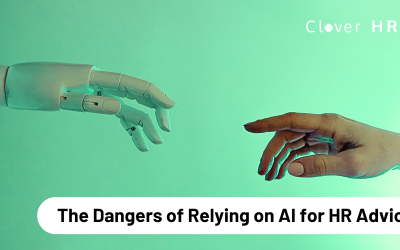Having a temperature of 37.8 degrees or more is one of the main symptoms of Covid-19. Many companies are introducing a Covid temperature check policy where temperature checks are performed upon entry to the workplace, to see if employees have a temperature of 37.8 or more.
Temperature scanning can offer reassurance of the potential symptoms of Covid-19. However it is important to remember that a high temperature is only one main symptom of Covid-19, a person could have the virus and not have a temperature, or an employee could have a high temperature and it not be Covid-19.
The European Union’s General Data Protection Regulation (GDPR) usually would prohibit employers from conducting temperature checks as health data is considered ‘sensitive personal data’ that employers would need an exception to implement. With the consent of employees or their consultative bodies, trade unions or work councils, they may be acceptable if they are conducted by either a medical staff member or using automated technology.
If conducting staff temperature checks, employers should consider the additional privacy concerns and any contract of employment implications, because if these are not properly implemented on a genuine need, it could constitute a breach of an employer’s implied duty not to damage the employee’s trust and confidence.
Practical considerations for UK employers implementing a Covid temperature check policy at work
- Where will the tests be taken?
- Who will be conducting the tests?
- Should records be kept of the testing? If so, these will need to be kept in confidential files and stored appropriately in line with GDPR
- Will all employees with a temperature be sent home, as a temperature does not mean it’s Covid-19, but it is one of the main 3 symptoms?
- Can the employer isolate an employee showing a high temperature until a second test is done and a decision made on if they are to go home?
- How will the screening be done; social distancing will need to be followed so cannot have employees queuing up for the test in the workplace.
- How will an employer deal with an employee who refuses to take a test?
- PPE for the person conducting the tests will need to be provided.
- Ensure policies and procedures are clearly defined and updated on what happens if an employee is sent home following a temperature test or because they have other symptoms of Covid-19.
- A thermal scanner can be effective in detecting anyone that has developed a fever, however, they will only detect if the employee has a temperature at that moment in time, not if they have previously had one or will develop one later in the day.
Employee responsibilities
If companies introduce temperature scanning, employees will still be required to take due care themselves. If they feel too hot to touch or have a continuous cough, or have lost their taste or smell, they should not be attending the workplace and should be self-isolating until they have arranged a test for Covid-19 and received the results back from the test.
Feeling unwell after passing the temperature check
If an employee passes the spot check temperature check but feels unwell later in the day with possible symptoms of Covid-19, an employee should be sent home and told to self-isolate for the recommended 10 to 14 days depending on their circumstances. Prior to the employee leaving the site, their temperature could be taken again if required.
What temperature to send employees home
A person’s normal body temperature is around 36.5 degrees to 37 degrees. A temperature of 37.8 does not necessarily mean someone has Covid-19, this can only be determined by testing. A Covid-19 test must be done within 5 days of an employee displaying any of the 3 main symptoms.
It can take between 2 and 10 days before people who are infected with Covid-19 to become ill and develop a fever and other symptoms, and some may not experience any symptoms at all.
Prior to a test
Employees should refrain from taking paracetamol 6 hours prior to having their temperatures checked as this lowers body temperature which can mask any temperature an employee may have. Taking hot showers or drinking a hot drink prior to a temperature check will not alter the test and show an employee has a high temperature when they do not.
If a reading shows high temperature
If an employee’s temperature shows to be high, the employee should be asked to rest for 5 minutes and then the temperature is taken again. If the second reading is above 37.8 the employee will be required to self-isolate for 7 days as per government guidance, or 14 days depending on their living arrangements. For anyone with symptoms of Covid-19 the advice is to contact 111 not visit a GP or pharmacy.
Employees who are sent home to self-isolate
Employees who are sent home to self-isolate, could be able to work from home if they are well enough to do so, and their job allows them to do this. Employees who are showing symptoms of Covid-19 and are self-isolating but not working remotely are entitled to receive at least statutory sick pay for the period of their self-isolation.
New Regulations
From the 28th September new regulations came into force, it is now an offence for an employer to knowingly permit an employee or agency worker who is self-isolating, to attend a place other than where they are self-isolating.
This includes individuals who are required to self-isolate because they live with someone who has tested positive.
So, employers who know employees have tested positive, or they live with someone who has tested positive, they are responsible for stopping the employee working, unless the employee can work from home.
Employers who fail to do so will face a fine starting at £1,000.
There is an obligation also for the employee to tell their employer that they are required to self-isolate.
If you would like further guidance or support on this your Covid temperature check policy please contact Clover HR on 0121 516 0299 or email us at info@cloverhr.co.uk


